The IFCN represents national and sections of professional societies as well as individuals who share the desire to promote best practices in clinical neurophysiology through education and research throughout the world.
This page pays tribute to the educators and the researchers who have made a substantial contribution to the CN community.
The IFCN member societies have provided the content for this page. Please contact the appropriate society for any errors or omission regarding respective content.
It is our deep regret to announce Erol Başar’s passing on the 28th of October 2017 in Istanbul. Professor Başar was born in Istanbul, Turkey in 1938. He had his high school education at Galatasaray gymnasium, a French speaking high school in Istanbul, a place where he had been attracted to the French philosophy and to the natural sciences. Later in university years, he studied particle physics in Munich, where he had the chance to attend those lectures offered by Werner Heisenberg and Carl Friedrich von Weizsäcker. After completing a master degree at Hamburg, with a strong influence of “cybernetics” by Norbert Wiener, in his early years he decided to take on a career on systems analysis of the brain. Following the suggestions of Carl Friedrich von Weizsäcker, he completed his PhD degree at the Institute of Physiology of the University Hannover on the systems analysis of vasculature and circulation, an experience which he later extended to the brain and the central nervous system during his postdoc studies in USA.
In 1970, Erol Başar founded the Department of Biophysics at Hacettepe University, one of the first of its kind in Turkey. Surrounded by enthusiastic young students, he conducted there, a wide range of studies on the electrical dynamics of the brain on various species. These studies brought him to the concept of “Brain Dynamics” at a period when the spontaneous EEG signals and the relatively novel event-related potentials were conventionally thought to be as two distinct types of electrical phenomena. In his monograph “EEG-Brain Dynamics”(1980), a magnum opus in the research area of event related oscillations, he hypothesized that the two electrical phenomena, the ongoing and event-related, were in fact, closely related to each other. He suggested that event-related potentials could be modelled as a superimposition of linear and/or non-linear changes in the various ongoing electrical oscillations of the brain activity as in the form of phase-resetting and/or amplitude enhancement just like as the weak or strong “resonance” phenomena observed in quantum physics.
This hypothesis brought, not only a new perspective to the brain electrophysiology, but also introduced the possibility of investigating the inter-relations between the ongoing and event-related activities of the brain within a systematic framework. From early seventies on, Erol Başar’s research group also studied the coherence among pairs of different brain structures as a measure of dynamic interaction during various sensory inputs, perhaps as one of the earliest examples of functional brain connectivity. All these pioneering works paved the way to the concept of evoked or event-related oscillations, which has built up the mainstream brain electrophysiology studies in later decades. In his book, he also introduced the idea that the EEG signal might reflect a switching between states of order and disorder in the brain as a form of strange attractor in dynamical systems, which was also widely explored in later years yielding important neuroscientific results.
In 1980 Erol Başar moved to Germany and worked at the Medical University Lübeck until 2000, where he extended his range of studies from cognitive processes, to the evolution of species, and to the more general strategies of brain dynamics approach. These efforts led him to organize two conferences after which he edited two new volumes, “Brain Oscillations I (Başar) and II (Başar & Bullock)”, published in 1988 and 1989, respectively. A small volume titled “Chaos in Brain Function” also appeared in 1990.
In 2000, Erol Başar returned his home country and established the brain research laboratories at Dokuz Eylül University in Izmir, where he studied between 2000 and 2006. Later he joined Istanbul Kültür University where he stayed until 2016.
His last monograph appeared in 2011: “Brain Body Mind in the Nebulous Cartesian System, A Holistic Approach by Oscillations”, as a multidisciplinary work amalgamating results from basic neuroscience, philosophy, clinical applications and physics. In this work he proposed a theory on the connectedness of the brain and body through oscillatory dynamics and stated that the relation of brain-body mind cannot be understood with classical Cartesian systems, but required a different framework. Based on the empirical data on circulatory dynamics and brain research he attempted to define the basic descriptors of such “Nebulous Cartesian System.”
“Application of Brain Oscillations in Neuropsychiatric Diseases, Supplements to Clinical Neurophysiology (2013)” was another volume he edited for Clinical Neurophysiology, in which the initial works on joint analysis of EEG and event related oscillations in Alzheimer’s Disease, mild cognitive impairment, schizophrenia, bipolar disorder and attention deficit hyperactivity disorder were presented.
Prof. Erol Başar chaired nine international workshops/conferences and two world congresses in his whole career. Those organized in 1983 (Sensory and Cognitive Processing of the Brain), in 1985 (Sensory and Cognitive Processing of the Brain II), in 1987 (Brain Dynamics: Progress and Perspectives), and in 1990 (Induced Rhythms in the Brain) were among the first meetings, in which scientists gathered for a deep discussion on EEG-event related oscillations. As one of the champions of event related alpha response, he also organized one of the earliest meetings on the functional role of alpha oscillations, in Lübeck, Germany in 1994 by the name “Functional Correlates of Alpha Activity of the Brain.”
For his entire career, Erol Başar published 7 monographs and edited 12 books with the collaboration of distinguished scientists from all around the world, published more than 250 journal papers and carried out 18 international research projects. His impact on EEG research on the other hand, is immeasurably beyond these figures.
In Brian O’Donnell’s words, “Erol Başar was a very creative and influential scientist, but he was also someone even rarer, a leader who brought scientists together in a fragmented world. For Erol Başar, the borders did not count, only the science that was done.”
It was a privilege to work with Erol Başar, as he gave us the comfort and dedication to test our limits of thinking. He not only provided us with confidence for working on cutting-edge scientific problems but he also taught us the joy of writing, whether it be a joy of writing a proceedings paper for a conference he organized, or a detailed research protocol, or a simple draft on free thoughts. He took science and turned it into a fun activity for us, but he did it in a very systematic way. Working with Professor Başar was to encounter the ideas of Descartes, Locke or Hume, the music of Mahler or Wagner, the cinema of Bergman, the poetry of Baudelaire, the “elan vital” of Bergson, or the paintings of Balaban. He was a best example of why someone needed intellectual and philosophical profundity to perform good science.
We believe that Erol Başar’s inspiration will continue to influence brain research for long times ahead, and his unforgettable memory will stay with us all.
Prof.Dr.BaharGüntekin
Prof.Dr.GörsevYener
Prof.Dr. Ahmet Ademoglu
Prof.Dr. Tamer Demiralp
Prof.Dr. Canan Başar-Eroglu
Turkish Society of Clinical Neurophysiology EEG—EMG
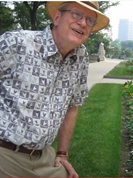
AANEM Past President and neurology pioneer Jasper Daube, MD, passed away on Saturday, April 18, 2020, in Rochester, MN, at the age of 84.
Dr. Daube was a very active AANEM member. He served on the Board as Secretary/Treasurer from 1979–1981, became President in 1983, and participated on the AANEM Board from 1974–1985. He was also the AANEM’s American Medical Association (AMA) Delegate from 1993–1999. He served on many AANEM committees and as an ABEM oral examiner. Being an educator was an important part of Dr. Daube’s legacy. He spoke often at the AANEM meetings. His dedication to the association and the field of electrodiagnostic medicine earned him the AANEM Lifetime Achievement Award in 1996.
To see a video Dr. Daube made reflecting on his presidency, click on this link.
Donations are being accepted by the American Neuromuscular Foundation in Dr. Daube’s memory. Click the link below to donate in his honor.
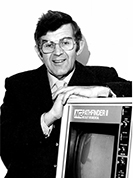
Graham Harding, past Secretary of the IFCN and past President of the BSCN, died on October 20th, 2018. His main contributions were in photosensitive epilepsy and evoked potentials of the visual system and he was one of the first to recognise the potential of magnetoencephalography (MEG).
It was whilst studying psychology at University College London that he developed a lifelong fascination with EEG’s power to record real time brain activity from the scalp. Graduating in 1961, he returned to his childhood city, Birmingham, to read for a PhD in EEG in psychiatry. Two years into the thesis, in 1963, he founded the Clinical Neurophysiology Unit at Aston University. He headed this from its inception to his retirement in 2002, building it into both the largest research department in Clinical Neurophysiology in the UK and a renowned clinical centre as well.
In Birmingham he met Peter Jeavons, a paediatric neurologist, who was to become his friend and co-worker over the next 35 years. Together they undertook a prolonged and in-depth study of a cohort of 460 patients with photosensitive epilepsy, exploring, for instance, the adequate stimuli to elicit photoparoxysmal responses. They published the first monograph on the subject in 1974; many papers and more books ensued.
Harding also recognised the dangers of flashing lights in broadcast media very early and drafted guidelines to minimize risk to photosensitive patients which were adopted in the UK and, later, in countries round the world. His initiative has therefore had lasting societal impact. Japanese colleagues may remember his scientific support to the Japanese government following the “Pokémon Shock” in December 1997.
Policing these guidelines was a long process, requiring the review of video, frame by frame. So, with the help of his wife, Pamela, he helped develop an automated device for this termed, appropriately enough, The Harding Flash & Pattern Analyser. He was subsequently asked about the safety of other flickering lights, including from wind farm blades and somewhat incongruously, whether contrasting coloured balls posed a danger by the British Isles Bowls Council.
Another area of interest was visual evoked potentials, from both cortical and subcortical areas. He studied various conditions including multiple sclerosis, optic atrophy and used peri-operative studies to predict outcome after surgery. When reports began to emerge of the retinotoxic effect of vigabatrin he was one the first to quantify it through multifocal electroretinography.
He was amongst the earliest in the UK to recognise the potential of MEG, buying a single channel MEG system in 1988, and in 1992, through collaboration with the Institute of Physics in Moscow, the first multi-channel system in the UK. In 2000, Graham led a successful Wellcome Trust bid to secure the UK’s first whole head MEG system. Then, in 2002, he retired to allow others to take it forward.
Passionate about education, he supervised over 40 PhD and MD students and was unusually supportive of trainees at national society meetings. He was the first Professor of Clinical Neurophysiology in the UK, President of the British Society for Clinical Neurophysiology (BSCN), Chairman of the International VEP Standards Committee, and Secretary of the International Federation of Clinical Neurophysiology. He was awarded a DSc from Aston in 1978, and received the Grey Walter Medal from the BSCN—its highest honour. Unusually for a non-medically qualified person, he was awarded honorary Membership of the Royal College of Physicians of London (1998) and then Fellowship in 2008.
Graham was something of a showman. For one public lecture, at Aston Great Hall, he arranged a live link to the magnetoencephalography lab. He entered the stage, which was flooded with dry ice fog, complete with music and cape. He entitled his talk “Mystic MEG,” (after the stage name of a well-known clairvoyant). In retirement his main hobby was model trains and he had a 750 feet long track in his garden. A skilled metal worker, like his father, he built his own engines powered initially by coal, gas or methylated spirits. Later he moved to electric power, not for environmental reasons, but because they were lighter to carry. He was famous locally for his monthly steam-ups, to which all were welcome. One year the Japanese Ambassador, himself an avid model-railroader, turned up in his limo, flags flying. Next was a working replica of an early 1900s steam car, which ran out of steam as he was driving his son and girlfriend to their prom. On another occasion, at a fete, it caught fire. After that, in his 70s, he bought a Morgan 3-wheeler instead, seeing it through its construction at the Morgan factory in Malvern before delighting in racing it up Speed Hill Climbs.
He married twice; first to Margaret Wagstaff, with whom he had two daughters Cathy Cutting and Laura Cooper, and then to Pam Evans. When they met he was wearing a loud multi-coloured tie complete with hot air balloons. Pam thought anyone wearing a tie like that must have a good sense of humour. He did, but the tie reflected his dress sense alone. They had a son, Anthony, who was one of a group of young children in whom he plotted the development of colour visual evoked potentials over the first couple of months after birth.
Graham Harding will be missed by many for his insights and research, and for his work for the IFCN; colleagues will also miss him for his humour, generosity and spirit too.
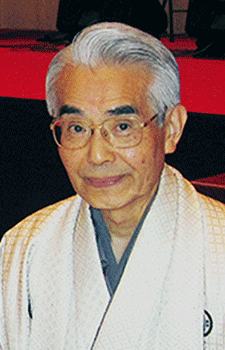 Unforgettable memories of Professor Hiroshi Shibasaki
Unforgettable memories of Professor Hiroshi Shibasaki
Professor Hiroshi Shibasaki, MD, PhD, passed away on June 9, 2022. Professor Shibasaki was a member of the Executive Committee of the International Federation of Clinical Neurophysiology (IFCN), serving as the President between 2006 and 2010, and as the Past-President between 2010 and 2014, during which time he made great contributions to the IFCN. On behalf of the Japanese Society of Clinical Neurophysiology (JSCN), I present here his obituary.
Prof. Shibasaki graduated from the Faculty of Medicine, Kyushu University, Fukuoka, Japan in 1964. He subsequently entered the Department of Neurology, Kyushu University Hospital. After working in Saga Medical School and National Center of Neurology and Psychiatry, he became Professor of the Department of Brain Pathophysiology in 1990, later becoming a Professor of the Department of Neurology in 1999.
Prof. Shibasaki was an excellent neurologist, but he was also known as an outstanding clinical neurophysiologist among members of the IFCN. His first research theme was readiness potential (RP), or Bereitschaftspotential. By applying the RP method, in 1975, he became the first to report a method for recording jerk-locked averaging in patients with cortical reflex myoclonus who showed giant somatosensory evoked potentials (Shibasaki and Kuroiwa, 1975). Later in his career, he continued to publish many excellent papers in every field of clinical neurophysiology.
Aside from his glittering career, I would like to briefly reminisce about my personal relationship with Prof. Shibasaki. Although Prof. Shibasaki was 14 years older than me, we graduated from the same high school and university. When I was a student of Faculty of Medicine, Prof. Shibasaki was already famous as an excellent clinician and researcher. I strongly admired him, and followed his footsteps by entering the Department of Neurology, Kyushu University Hospital after graduating from university. Subsequently, I moved to Saga Medical School where Prof. Shibasaki was the Professor of the Department of Neurology. As Saga Medical School was a newly opened small college, and I was only one young neurologist, Prof. Shibasaki’s teachings gave me a thorough knowledge of neurology and clinical neurophysiology. I feel truly lucky to have benefitted from his teaching. Before Prof. Shibasaki moved to the National Center of Neurology and Psychiatry, Tokyo in 1988, we published about forty papers as co-authors, including more than ten papers in Clinical Neurophysiology. Although we worked in the same Department for only 6 years, this was a very fruitful period for us.
One of the most important and unforgettable events was at the International Congress of Clinical Neurophysiology in Kobe in 2010. Prof. Shibasaki was President, and I was the Chair of the Program Committee. His diligence and hard work for this congress truly impressed me, and we closely communicated by sending e-mails and/or telephones every day. This hard work bore fruit, and the congress was a great success.
Prof. Shibasaki was known as an honest and serious man, but his charm and humor also shone through. We truly enjoyed working together in clinical and research work. I remember now his joke, which he frequently made at international meetings and was based on the time when he worked in Prof. A.M. Halliday’s Department at the National Hospital for Neurology and Neurosurgery, Queen Square, London. He said “I was called Hiro at that time, but unfortunately not Hero”. Although it is difficult for me to judge the humor of this joke, it is nevertheless a strong memory which has risen recently, in memory of his shy smile.
The last time I met with Prof. Shibasaki was immediately before I retired in 2019. I visited his home in Kyoto with my wife, and we thanked him for what he had done so far and talked about my future plans. He looked tired, but nevertheless talked effusively with a tender smile. As I finish writing this obituary I am brought to tears, not due to my aging, but due to the great respect and appreciation for my eternal teacher, Prof. Hiroshi Shibasaki.
July 22, 2022
Ryusuke KAKIGI, MD, PhD
Professor Emeritus
National Institute for Physiological Sciences
Visiting Professor
Juntendo University, School of Medicine
References
Shibasaki H, Kuroiwa Y. Electroencephalographic correlates of myoclonus, Electroencephalogr Clin Neurophysiol, 1975;39:455–463.
Figure Legends
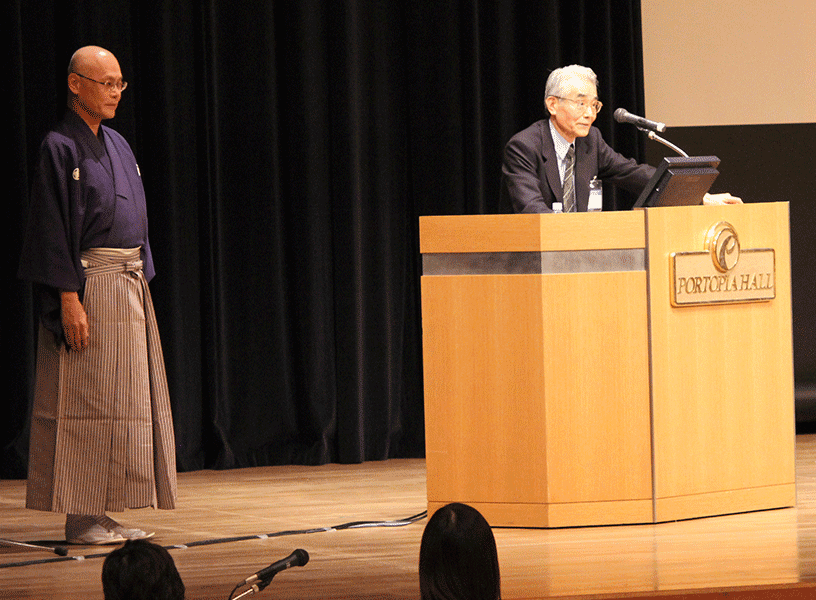 Figure 1. Prof. Shibasaki gave an impressive speech in the closing ceremony at which I played the role of MC. This picture shows Prof. Shibasaki and me in the traditional Japanese samurai clothing, Kimono.
Figure 1. Prof. Shibasaki gave an impressive speech in the closing ceremony at which I played the role of MC. This picture shows Prof. Shibasaki and me in the traditional Japanese samurai clothing, Kimono.
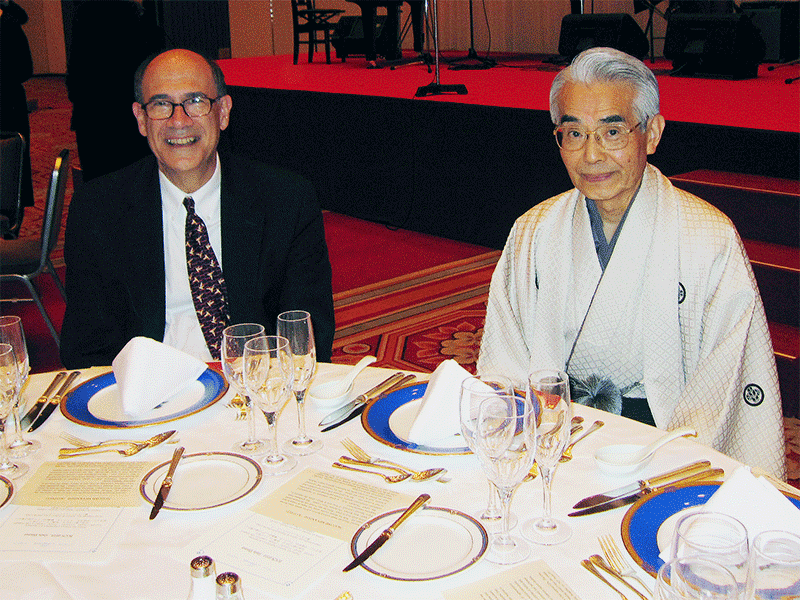 Figure 2. Prof. Shibasaki in Kimono and his best friend, Prof. Mark Hallett, at a Gala Dinner.
Figure 2. Prof. Shibasaki in Kimono and his best friend, Prof. Mark Hallett, at a Gala Dinner.
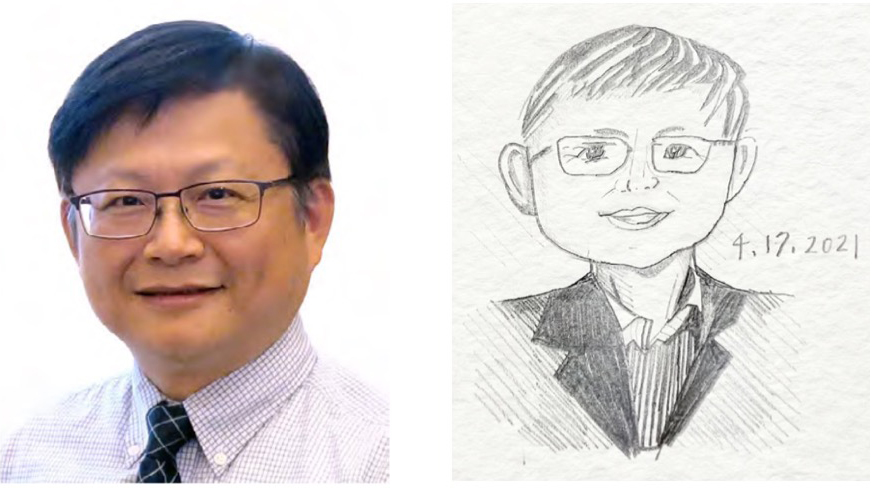
Dr. Ying-Zu Huang was one of the most highly cited scientists in the field of non-invasive brain stimulation, particularly for his 2005 paper in Neuron on Theta Burst Stimulation (TBS), a form of neuromodulation that is now being routinely used to treat depression in many clinical centres throughout the world. Ying-Zu Huang was born in Taiwan and trained as a neurologist at the Chang Gung Medical centre in Taipei. Two days after his wedding ceremony he travelled with his wife to London to undertake a PhD with the dry, scholarly title of “Functional connectivity in the human cerebral cortex: exploration and modulation of patients with primary and secondary dystonia.” Then somehow, over the time he was there, it morphed in a flurry of papers into a citation classic in Neuron and a thesis with a completely different title of “Theta burst stimulation.” Not a man to waste his time, in the first 18 months he had not only fathered his first child but also, with Dr. Mark Edwards, finished 7 papers on the physiology of DYT1 dystonia. They had also completed much of the groundwork and safety testing on theta burst stimulation. In the following 18 months Ying-Zu had written up his thesis and returned to Taiwan with enough data to provide a string of papers on theta burst stimulation for years to come. It was a classic case of why it is not always necessary to stick with a rigid thesis plan that is so favoured by university authorities at the present time.
TBS is a form of repetitive transcranial magnetic stimulation (TMS) that delivers short bursts of high frequency stimulation 5 times per second. It was modelled on the patterns of stimulation often used in brain slice preparations to induce synaptic plasticity in the hippocampus. Ying-Zu Huang found that it was also effective in changing the strength of synaptic connections in the human motor cortex. In addition, he found he could reverse the effect from excitation to inhibition by changing the timing of the bursts. In later papers, he found that the plasticity could be reversed (depotentiation or de-depression, depending on whether the primary effect was excitatory or inhibitory) by a second short train on TBS if given within a few minutes of the initial TBS train. It represents one of the physiological bases for erasure of short-term memory. Reversal of plasticity is reduced in rodent models of Parkinson’s disease by long-term treatment with levodopa and contributes to onset of dyskinesias. Ying-Zu used his new techniques to confirm that this was also the case in human patients with Parkinson’s disease: patients who experienced levodopa-induced dyskinesias failed to show depotentiation.
In a series of later papers, Dr. Ying-Zu Huang explored the mechanisms of TBS in more detail, exploring network-wide effects of localised stimulation, as well as its pathology in movement disorders and possible contributions to clinical treatment of neurological disease. His most recent work involved the study of TBS in animal models and its exploration with molecular imaging as well as a set of new experiments using non-invasive ultrasound stimulation of the human brain.
Dr. Huang was highly regarded by his colleagues in Taiwan. He was president of the Taiwan Society of Clinical Neurophysiology from 2013-2016, during which he increased international collaboration with Japan and Australia and organised a series of successful international meetings. He was executive member of the Movement Disorder Society Asian Oceanic Section (MDS-AOS) from 2017–2021 and despite his progressive illness, provided major input to the MDS-AOS basic science summer school in 2021.
Ying-Zu believed that if we want to go further, we must all go together, even if some may go faster alone. He treasured his family, his wife, and young daughter and son and was an unforgettable warm-hearted friend to others, modest, co-operative, highly knowledgeable and always positive. His death at 55 years cut short a truly outstanding career.
John C. Rothwell, UCL Queen Square Institute of Neurology
Rou-Shayn Chen, Department of Neurology, Chang Gung University College of Medicine
Figure: A photo of Dr. Ying-Zu Huang plus a sketch of him by his daughter on the day he passed away.
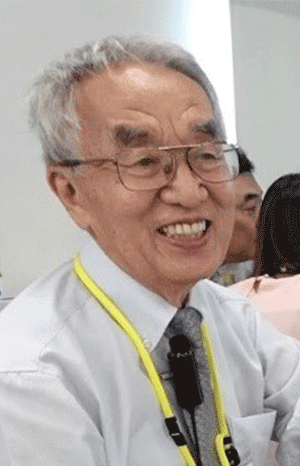
With great sadness we note that Professor Jun Kimura passed away on March 3, 2022.
Dr. Kimura was born on February 25, 1935, in Kyoto, Japan. After graduating from Kyoto University (Bachelor of Technology, 1957; MD, 1961), he was granted a Fulbright Scholarship (1962–1967), and began his career at the University of Iowa School of Medicine as a medical resident and fellow (1962–1968), Associate Professor (1972–1977), and Professor (1977–1998). Dr. Kimura returned to his alma mater, to serve as Professor and Chairman of the Kyoto University Department of Neurology (1988–1998) before returning back to the University of Iowa as Professor Emeritus (1998–2022).
Dr. Kimura was internationally renowned as a pioneer in the field of Electrophysiology. He authored Electrodiagnosis in Diseases of Nerve and Muscle, considered the standard textbook in the field. In addition, he served on the editorial boards of many publications including Muscle and Nerve (Editor-in-Chief, 1988–1997). He served as President of the American Association of Electrodiagnostic Medicine (1985–1986), President of the International Federation of Clinical Neurophysiology (1990–1993), Director of the Japanese Society of Clinical Neurophysiology (1992–2001), President of the Japanese Neurological Society (1997–1998), and President of the World Federation of Neurology (2002–2005).
Dr. Kimura received the American Association of Electrodiagnostic Medicine Lifetime Achievement Award (1999) and the International Congress of Neuromuscular Diseases Lifetime Achievement Award (2006). The Jun Kimura Outstanding Lectureship was established in his honor in 2019.
Prof. Kimura’s clinical and scientific contributions to Clinical Neurophysiology are legendary. He was an outstanding teacher, and only a few months ago he gave an authoritative lecture on F-waves in our Masterclass by IFCN series.
Despite his impressive academic accomplishments, Dr. Kimura will be best remembered for his kindness, generosity, and humility. He was a brilliant and caring mentor and treated everyone with respect. His cordial personality will be greatly missed by everyone who had the privilege to know him personally.
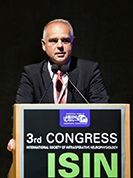
In these very sad days, we mourn the loss of Karl Kothbauer, to many of us not only an esteemed colleague, but also a good friend. With Karl’s sudden passing, the international neurosurgical and intraoperative neurophysiological community has lost not only a prominent figure in both disciplines but, above all, a very special person.
Karl Kothbauer was born on April 9, 1962 in St. Pölten, Austria, and unexpectedly died in Lucerne, Switzerland on October, 23, 2020.
Karl was Chief and Professor of Neurosurgery at the Kantonsspital in Lucerne but a Pediatric Neurosurgeon in his heart. He trained with Fred Epstein and Rick Abbott at the Institute of Neurology and Neurosurgery in New York, where he worked from 1998 to 2004, first as a Fellow, then as an attending pediatric neurosurgeon and Assistant Professor of Neurosurgery at the Albert- Einstein-College of Medicine. Upon his return to Europe in 2004, he was appointed Chief of Neurosurgery in Lucerne where, over the past 16 years, he has built up a renowned academic referral center for Neurosurgery.
Karl Kothbauer was, above all, one of the very few neurosurgeons with amazing expertise and competence in the field of Intraoperative Neurophysiology. And, it was his, at that time, visionary interest for this discipline that brought him to New York, in 1996, to join Vedran Deletis, at Beth Israel Hospital, New York for a 2-year fellowship in Intraoperative Neurophysiology. He became, then, one of the very first neurosurgeons to be fully trained in Intraoperative Neurophysiology.
There are not many people in medicine who achieved expertise in two fields to the extension that Karl did in Neurosurgery and Intraoperative Neurophysiology. He was extraordinary in both, integrating them and making neurosurgery better and safer, by caring for the benefits of his patients and preserving them from intraoperative induced injury. This approach made him a neurosurgeon of astonishing quality.
His main research focus was on intraoperative warning criteria for motor evoked potential and D-wave monitoring during highrisk surgery for intramedullary spinal cord tumors. His contribution to this specific field remains outstanding and enriched his international reputation to the point that he received patient referrals from many countries. Surgeons as well as neurophysiologists visited Lucerne to observe his surgeries. His keystone paper on the role of Intraoperative Neurophysiology during surgery for intramedullary spinal cord tumors, changed significantly the neurosurgical approach to this pathology (Kothbauer et al., 1998).
To become a founding member of the International Society of Intraoperative Neurophysiology (ISIN), the host of the very first and overwhelmingly successful ISIN Congress in Lucerne and, in 2009, the third President of our Society were then just natural steps to follow. Karl was not only a leader in this field but also served as an ambassador for the field of Intraoperative Neurophysiology within the international neurosurgical community for the last 20 years, influencing many colleagues with his authority, scientific rigor and innovative thinking.
With the words of one of his mentors, Rick Abbott, “behind his quiet, reflective personality, he was the model for an empathetic surgeon whose patients and trainees loved and treasured him.” He was always open-minded for new research ideas, but he was also standing up for what he believed to be right and true. He was teaching what he had learned in the past and supporting young trainees to build up their own profiles in an extraordinary way. His philosophy was to teach the new generation how to become even more knowledgeable than the previous one.
Just a year ago, in Vienna, the International Society of Intraoperative Neurophysiology (ISIN) granted him the Fred J Epstein Memorial Lecture as “An individual of exceptional competence, scientific contribution, with qualities such as thinking “out of the box” and “against the mainstream.” This was Karl Kothbauer, the neurosurgeon and the scientist. Yet, whoever had the fortune and privilege to know him well, knows that Karl was much more than that. He was a humble colleague and a loyal friend, with a genuinely generous heart. In spite of sometimes appearing very serious and reserved, he had, in fact, a sense of humor and irony like no other. Fond memories of the years working in New York and then at the ISIN courses and congresses, and on private occasions with his family, are countless.
Love and dedication to his family was no less than his commitment to Neurosurgery and Intraoperative Neurophysiology. Karl was a beloved husband and father, and our affectionate thoughts and prayers are today with his wife and his son.
Karl will be missed, a lot. However, his legacy will stay and will inspire all of us in the years to come.
Fernando Henrique Lopes da Silva (Lisbon, January 24, 1935) has passed away on May 7, 2019.
He received his Medical Degree from the University of Lisbon in 1959 and the PhD in Physiology from the University of Utrecht in 1970. He was appointed full professor of Physiology at Amsterdam University and scientific director of the Dutch Institute of Epilepsy. After this academic service, he was appointed Emeritus Professor in Amsterdam and invited professor at Lisbon University.
He leaves to all of us an invaluable scientific legacy, hard to summarize in a few words. He published hundreds of scientific papers investigating the role of brain oscillatory mechanisms using advanced EEG and MEG techniques. These studies have unveiled biophysical and neurophysiological oscillatory models of the interactions between cerebral neural systems underpinning vigilance, sleep, and cognitive-motor functions in physiological and pathological conditions (with a focus on Epilepsy). One of his last major contributions was to play the role of Editor, together with Don Schomer, in the production of the seventh edition of the master EEG handbook entitled “Niedermeyer’s Electroencephalography: Basic Principles, Clinical Applications, and Related Fields (2018).”
His scientific work has tremendously contributed to the development of Neurophysiology, Clinical Neurophysiology, and EEG theory. For this work, he was awarded a distinguished member of Academy of Sciences of The Netherlands and received several honorary distinctions in the fields of Clinical Neurophysiology and Neurosciences.
He also leaves to all of us a permanent reminder of academic and social responsibility, declined in his professional acts with a unique gentleman style. He defeated the time and made our time better. In his mourning announcement card, one can read the Portuguese verse “as árvores morrem de pé!” (“trees die on their feet”). An evergreen tree will ever stand in front of us.
On the 29th of October 2016, Professor Carl Hermann Lücking passed away, aged 78, in his home at Stegen near Freiburg, Germany. He was a dedicated clinical neurophysiologist and neurologist through all his professional life and was President of the German EEG Society, the later German Society of Clinical Neurophysiology (DGKN), from 1982–1983 and from 2002–2003. For his extraordinary achievements in the field of Clinical Neurophysiology he was awarded the “Hans-Berger-Preis“ by the DGKN, its highest award, in 1997. He was President of the International Federation of Clinical Neurophysiology (IFCN) from 1993 to 1997, and Honorary President of the 29th Intern. Congress of Clinical Neurophysiology, Kobe/Japan 2010 and the 30th Intern. Congress of Clinical Neurophysiology, Berlin/Germany 2014.
C.H. Lücking was born in Oelde, Westfalia, in 1938. He studied Medicine at the Universities of Göttingen, Munich, Vienna, Paris and Freiburg. After finishing his dissertation on eye movements at Freiburg University in 1964 he worked as a Max-Planck-Fellow in the Department of Functional Neurosurgery, Hôpital Foche, Paris with Profs. G. Guiot and D. Albe-Fessard and from 1966–1970 as research fellow and resident in the Department of Neurophysiology and Neurology and Psychiatry of the Max-Planck-Institute of Psychiatry, Munich with Profs. O. Creutzfeldt and D. Ploog. After a year as research fellow at the Department of Neurology, University of Vienna with Prof. F. Gerstenbrand he became senior resident at the Department of Neurology and Clinical Neurophysiology at the Technical University Munich headed by Prof. A. Struppler. Here he became a board-certified neurologist and psychiatrist in 1971 and pursued his academic career advancing to the positions of Associate Professor and Vice-Chairman in 1978. In 1982 he was appointed Prof. of Neurology and Chair of the Department of Neurology and Clinical Neurophysiology at the Albert-Ludwigs-University Freiburg following Prof. R. Jung from where he retired in 2003.
His research interests continuously centered around Clinical Neurophysiology. Starting with EEG techniques in the field of epileptology and disorders of consciousness he put his focus in his time in Munich and Freiburg increasingly to the Neurophysiology of the motor system, especially to functional neurosurgery and neuropharmacology of movement disorders and added modern brain imaging in his last years in Freiburg. He was first, senior and co-author of more than 150 articles in peer-review journals. He served on the editorial board of several scientific journals and became Honorary Consulting Editor of the IFCN journal “Clinical Neurophysiology.” He was regular reviewer for many leading journals in the field of neurology and clinical neurophysiology. Special mention deserves his editorship for the Volumes “Clinical Neurophysiology: From Receptors to Perception”, with G. Comi, J. Kimura and P.M. Rossini in 1999 and “Wave Length and Action Potentials: History of the International Federation of Clinical Neurophysiology” with M. Nuwer in 2010, both Supplements to “Clinical Neurophysiology” published by Elsevier, Amsterdam.
He was awarded the Honorary Doctorate from the University Iasi, Romania and from the Semmelweis-University Budapest, Hungary. He became Honorary Member of the Hungarian Society of Neurology and Psychiatry, of the Société de la Neurophysiologie Clinique de la Langue Francaise, of the Société Francaise de Neurologie, of the Rumanian Society of Clinical Neurophysiology and of Hungarian Society of Movement Disorders and he was a Corresponding Member of the Swiss Society for Clinical Neurophysiology.
C.H. Lücking was a compassionate neurologist with great empathy for his patients and an excellent teacher for both students and young residents. The two authors of this obituary did their first steps in clinical neurology under his supervision and remember very well his legendary daily clinical conferences on the wards with intensive discussion of the newly admitted patients and his EEG seminars. Correspondingly, he was co-editor of one of the most frequently used German textbooks of Neurology (Neurologie compact, Thieme, Stuttgart). He was certainly one of the members of the dying out generation combining a profound knowledge in general neurology and clinical neurophysiology.
His family was his anchor and harbor and it was the support by his family, which gave him the energy to fulfill his duties in his academic institution as well as on the national and international stage. He is survived by his wife Irmgard Merula, his two sons Christoph and Thomas with spouses and three grandchildren. His death means a great loss for German, European and International Clinical Neurophysiology.
Reinhard Dengler MD, Hannover
Günther Deuschl MD, Kiel
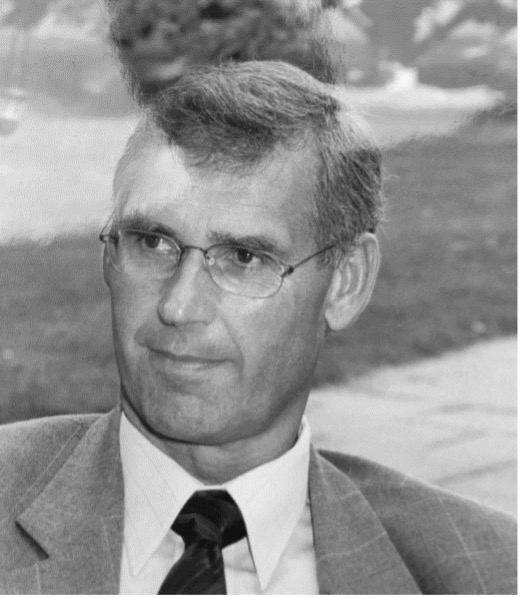
Written by Prof. Walter Paulus
With great sadness we have noted the passing away of Professor Johannes Noth on March 10, 2022 at the age of 79 years. He served the IFCN as secretary during the presidency of François Mauguière (2001-2006). He was chairman of the department of Neurology, University of Aachen, between 1992 and 2011, before that at the Alfried Krupp hospital in Essen between 1984 and 1992 following Thomas Brandt. He was president of the German Society of Clinical Neurophysiology between 1993 and 1994, and president of the German Society for Neurology between 2005 and 2006.
He studied medicine in Göttingen in the late sixties, my later home university. It was in 1974 when during my undergraduate training in Düsseldorf, I first became addicted to neurophysiology. Being fascinated by the lectures on spinal cord neurophysiology I approached Professor Noth for a topic for a medical thesis. At that time the Düsseldorf Neurophysiology group was focussing on Renshaw inhibition of autogenic recurrent inhibition of gamma-motoneurons. Though my lack of skilfulness prevented me from pursuing this type of research, and I focussed instead on the psychophysics of colour vision, I was able to monitor Johannes’s progress from next door. I remember an enthusiastic scientist, always restless, pursuing the goal to understand more details of the functioning of the spinal cord. Science was also regularly interrupted by basketball sessions in front of the institute. He was a very tall man, giving him an advantage in this particular sport.
After Düsseldorf he worked with Mathews and Hulliger in Oxford on muscle spindles, with Dietz and Jung in Freiburg on human stretch responses and then returned to Düsseldorf in the department of neurology to work on human neurophysiology, spasticity and reflex studies. Here our ways crossed again. Later he studied grip precision in Parkinson’s, 600 Hz oscillations after median nerve stimulation, and long-loop reflexes in basal ganglia diseases, to mention a few of his broad neurophysiology interests. Altogether he published 230 papers, many of them single—authored.
Johannes Noth was a unique researcher bridging systemic animal neurophysiology with human neurophysiological research.
He was a very kind person, very communicative, with a smile on his face and a joke on his lips. A measure of his popularity was his being elected Dean of his home Medical Faculty of Aachen Technical University in 2007, the workload of which led him to resign as secretary of the IFCN in that year. The passing away of Johannes Noth is a great loss both scientifically and personally.
Our thoughts are with his family, in particular with his wife Gunhild.
IFCN ExCo meeting in Aachen, September 2005
From left to right: Gunhild Noth; Mark Hallett, Kathy Eisen, Johannes Noth; Andrew Eisen; Ryuji Kaji, Graham Harding, Francois Mauguiere, Christine Mauguiere
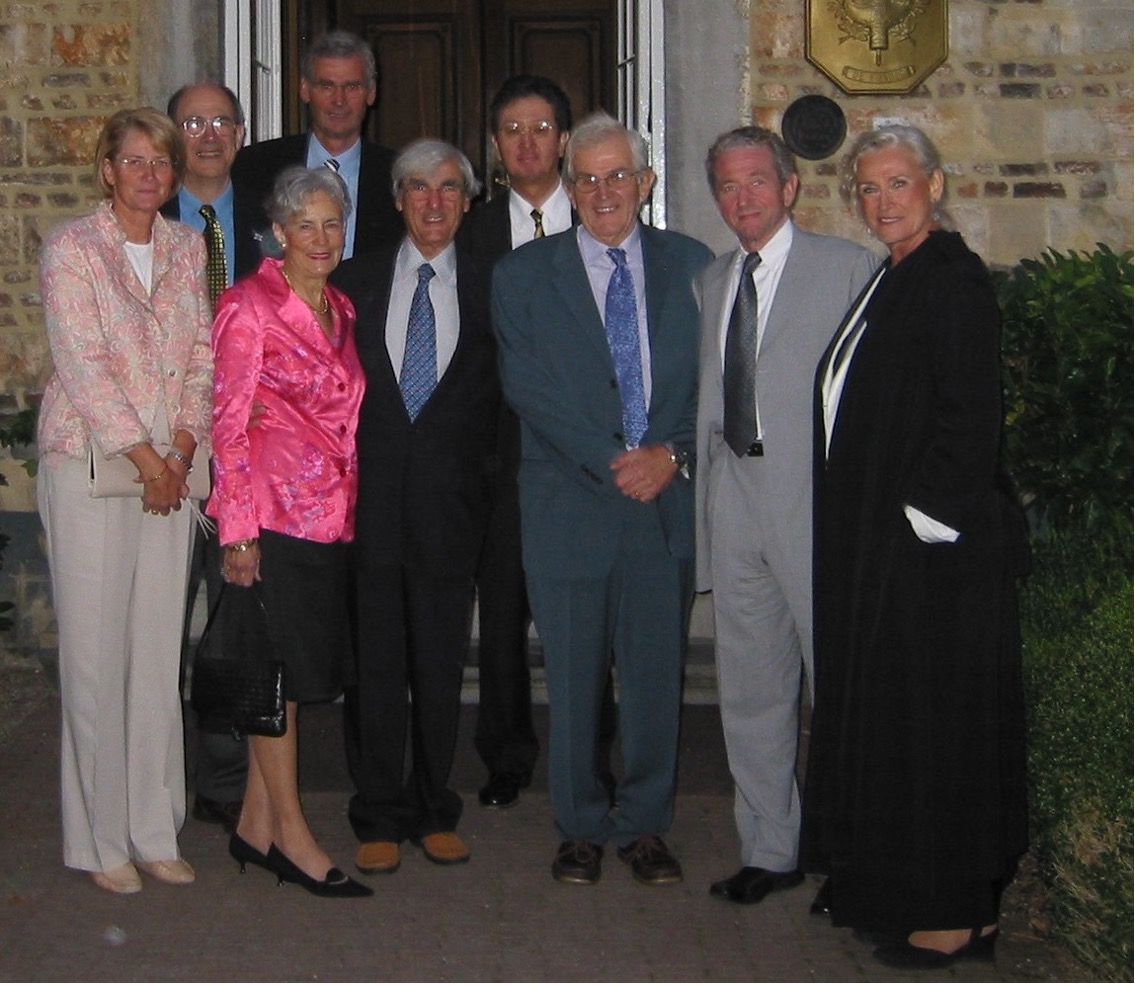
Craig Emery Tenke, born October 19, 1950, passed away unexpectedly on December 19, 2017, at the age of 67. Craig, having worked as a senior neuroscientist and dedicated electrophysiologist at New York State Psychiatric Institute (NYSPI) and Columbia University for many years, was at the prime of his career and in keen pursuit of new challenges. He served as an Associate Editor for Clinical Neurophysiology from 2008 to 2016, and as a member of the Editorial Board from 2003 to 2008.
Craig earned an A.S. degree in Science from the Suffolk County Community College at The State University of New York (S.U.N.Y.) in 1971, a B.A. summa cum laude in Psychology from Stony Brook University at S.U.N.Y. in 1972, an M.A. in Neuropsychology from Queen’s College at the City University of New York (C.U.N.Y.) in 1976, and a Ph.D. in Neuropsychology from C.U.N.Y. in 1983.
From 1983 to 1987, Craig completed his postdoctoral training in Neuroscience at Albert Einstein College of Medicine (“Einstein”), and he continued to work with Joseph C. Arezzo, Herbert G. Vaughan, Jr., and Charles E. Schroeder as a Research Associate until 1988.
Throughout these early years, Craig was the recipient of several community and intramural scholarships. He supported his training by working as a Laboratory Assistant (S.U.N.Y. Stony Brook, 1971–1972), Adjunct Lecturer and Grant Assistant (C.U.N.Y. Queen’s College, 1973–1981) and as a Scientific Programmer (NYSPI, 1981–1984). By that time, he had developed significant hands-on experience with mainframes, emerging microprocessor systems, and relevant programming languages, such as assembler, FORTRAN, and BASIC.
Craig’s programming skills were supplemented by his first hand know-how in designing, building and repairing electronics. This blend established Craig’s roots in the Psychophysiology Laboratory within the Department of Biopsychology at NYSPI. The Psychophysiology Laboratory was founded and directed by the (late) Sam Sutton, who is recognized for the groundbreaking discovery of the P300 component (Sutton et al., 1965). Working with Sutton and Gerard E. Bruder developed Craig’s curiosity about both event-related brain potentials (ERPs) and applying EEG/ERP measures to clinical research in psychopathology, particularly depression. Together, this combination became an integral part of his own research; wherefore, after Sutton’s death in 1986, Craig assumed the position of the principal electrophysiologist in the Psychophysiology Laboratory. In this role, he meticulously guided acquisition, analysis and interpretation of scalp-recorded human EEG and ERP throughout the remainder of his life.
Brain structures and functions always fascinated Craig. At one point, he found himself in charge of a lab section on the gross dissection of human brain specimens for a medical school class. His early intracranial work in electrophysiology at Queen’s College and Einstein—using both open and closed stereotactic techniques (Tenke, 1983)—involved several species, including rat, rabbit, cat and monkey (e.g., Schroeder et al., 1991). Out of respect for his animal research subjects, Craig chose to be a vegetarian, avoiding food from the same branch or higher on the evolutionary tree.
It did not take long for Craig to recognize that enduring scientific progress via empirical research can only be accomplished by strict adherence to the scientific method. Accordingly, Craig emphasized relying on verifiable quality criteria (objectivity, reliability, validity) throughout his academic career, long before scientific rigor became a popular phrase. For example, interpreting treatment-related changes in EEG power spectra requires knowledge about their condition dependent internal consistency (Tenke, 1986), identifying artifactual electrode bridges in EEG recordings is mandatory for faithfully interpreting their topographies (Tenke and Kayser, 2001), and a multisite study needs to establish adequate test-retest reliability of electrophysiological measures before embarking on a randomized-clinical trial (Tenke et al., 2017a).
These experiences and insights afforded Craig a unique set of neuroanatomical, mathematical, and (bio-)engineering skills that motivated an informed evaluation and study of the underlying generators of the EEG and ERP signal. His methods included dipole models and simulations (Tenke and Kayser, 2015), current source density (CSD) analysis spanning microscopic (intracranial) and macroscopic (scalp-recorded) scales (Tenke et al., 1993; Tenke and Kayser, 2012), and component identification and simplification using principal components analysis (PCA) across spectral and temporal domains (Tenke and Kayser, 2005; Tenke et al., 2008, 2010). I had the good fortune to begin working with Craig in the mid-90’s. Our joint interest in systematically tackling common pitfalls of reference-dependent surface potentials that originate from principles of volume conduction and choice of EEG recording reference, combined with the need to define meaningful outcome measures (variance patterns), has produced a series of empirical, technical and theoretical papers on CSD and PCA (e.g., Kayser and Tenke, 2003, 2006a, 2006b), including a special issue on how reference-free surface Laplacian (CSD) methods render superior electrophysiological measures (Kayser and Tenke, 2015).
While applying these methods to human EEG research, Craig was simultaneously cognizant of their strengths, limitations and nuances, and although he operated almost entirely behind-the-scenes, he was truly restless in his efforts to raise the bar for the field and educate his peers if needed. These qualities were on display during his generous peer review efforts, not only for this journal but also as an ad-hoc reviewer for numerous scientific outlets and review committees. His guidance was sought after by scholars both locally and around the globe.
Throughout his life, Craig trained and mentored technicians, doctoral candidates, postdoctoral fellows and colleagues in the conduct of electrophysiological research, all the while being exceptionally unselfish with his time and often leaving a lasting impression on his peers with his unique sharp intellect and quirky personality. During his academic career, Craig served as a principal investigator or co-investigator on multiple grants awarded by the National Institute of Mental Health, philanthropic foundations and the pharmaceutical industry to study cognitive and neurophysiological functions in mood disorders and psychosis, often with the goal of evaluating the suitability of these measures for characterizing symptom features or diagnostic subtypes of major depressive disorder or for the prediction of antidepressant treatment response (e.g., Bruder et al., 1997, 2008). For many highly productive collaborations within NYSPI/Columbia as well as on a national and international level, Craig represented the electrophysiological component of the project and personified a cornerstone of methodological excellence.
Craig loved his home in Center Moriches, New York, on Long Island, where he lived with his family for his entire life. He served his community as both a spiritual leader and informal educator: he was a Ruling Elder at the Presbyterian Church of the Moriches (1998–2011) and a Sunday Jr.-Sr. High School teacher (2007–2011). Craig was a (proudly) outspoken voice in his congregation regarding controversial issues such as Intelligent Design and Sexual Minorities. Craig’s faith and science coexisted: he was ever conscientious about distinguishing between religious belief, moral values, ethical standards and scientific reasoning. He was also inquisitive about the interplay between these concepts and their possible relevance for mental health. As a result, Craig was instrumental in obtaining funding from the John F. Templeton foundation to help understand the role of religious or spiritual belief (R/S) in the resilience of families at risk for depression, given evidence suggesting a link between posterior EEG alpha at rest, a putative biomarker of antidepressant treatment response (Tenke et al., 2011), and the ontogenesis of R/S importance (Tenke et al., 2013, 2017b).
Craig’s legacy can be found in the continuation of the research he initiated with his scientific rigor, curiosity and generosity. Although we have lost a valued colleague who is sorely missed in this mission, Craig E. Tenke inspired electrophysiological research, cognitive neuroscience and clinical neurophysiology for years to come.
Jürgen Kayser
Divisions of Cognitive Neuroscience and Translational Epidemiology, New York State Psychiatric Institute, New York, NY, USA
Department of Psychiatry, Columbia University College of Physicians & Surgeons, New York, NY, USA